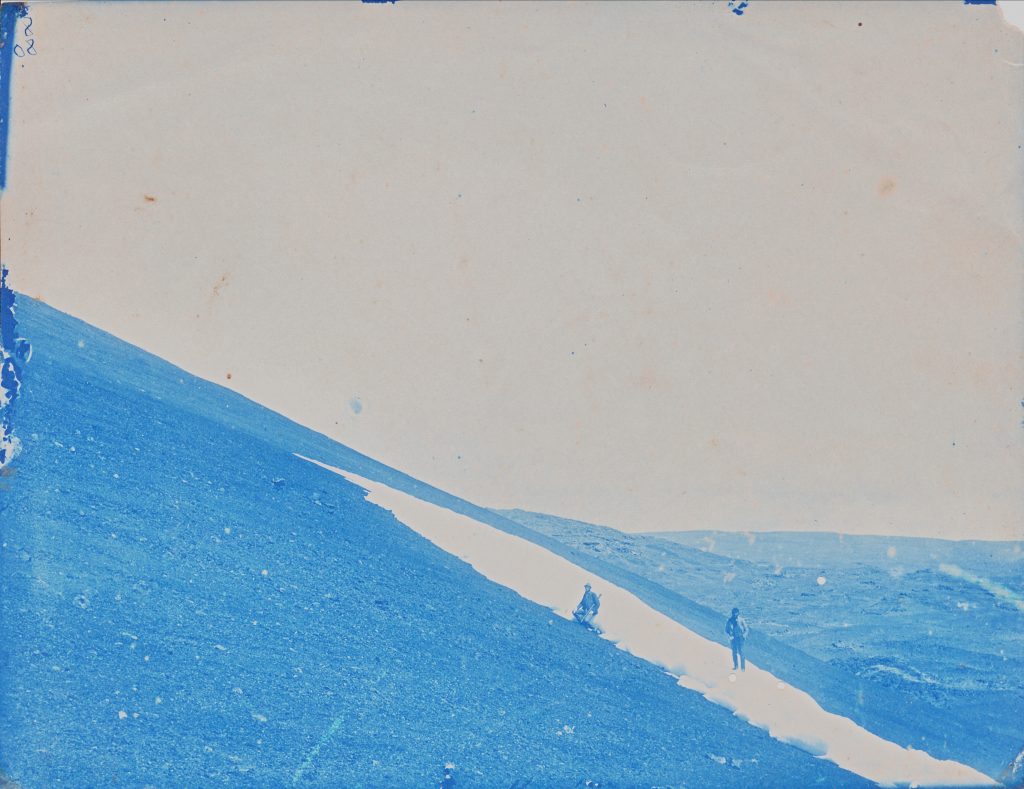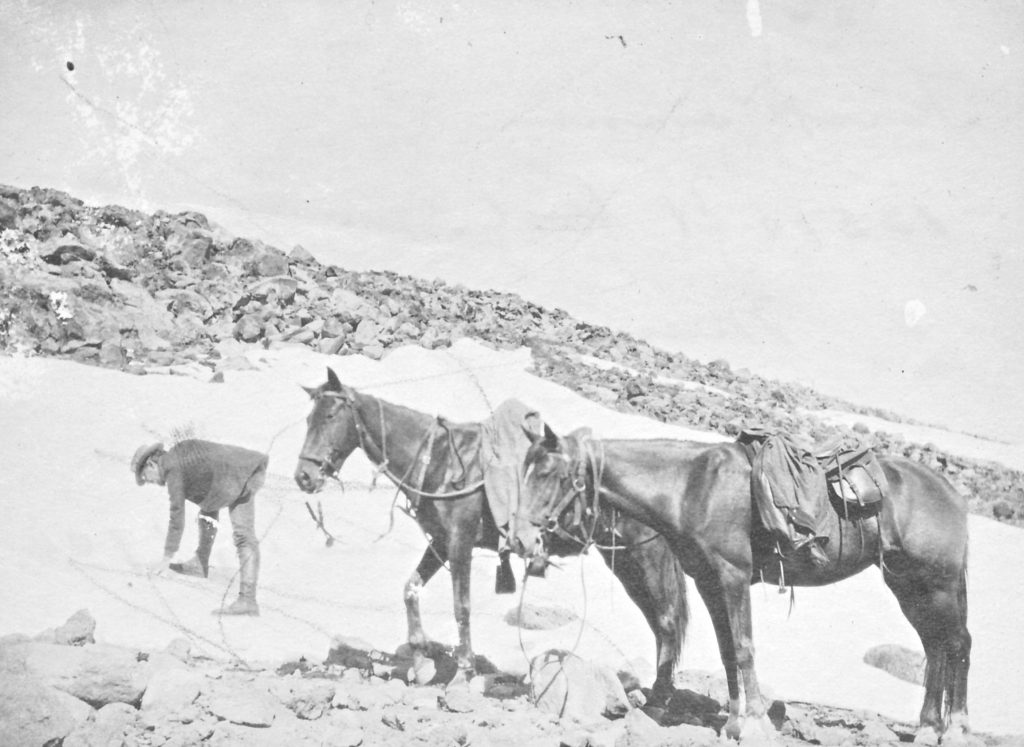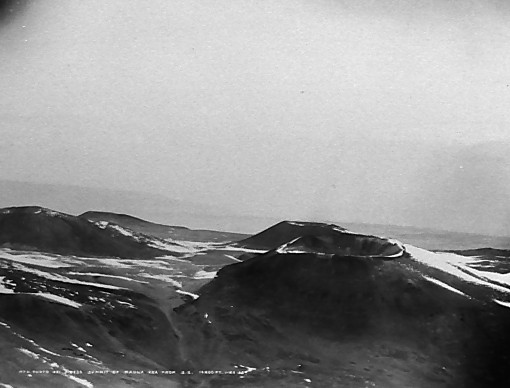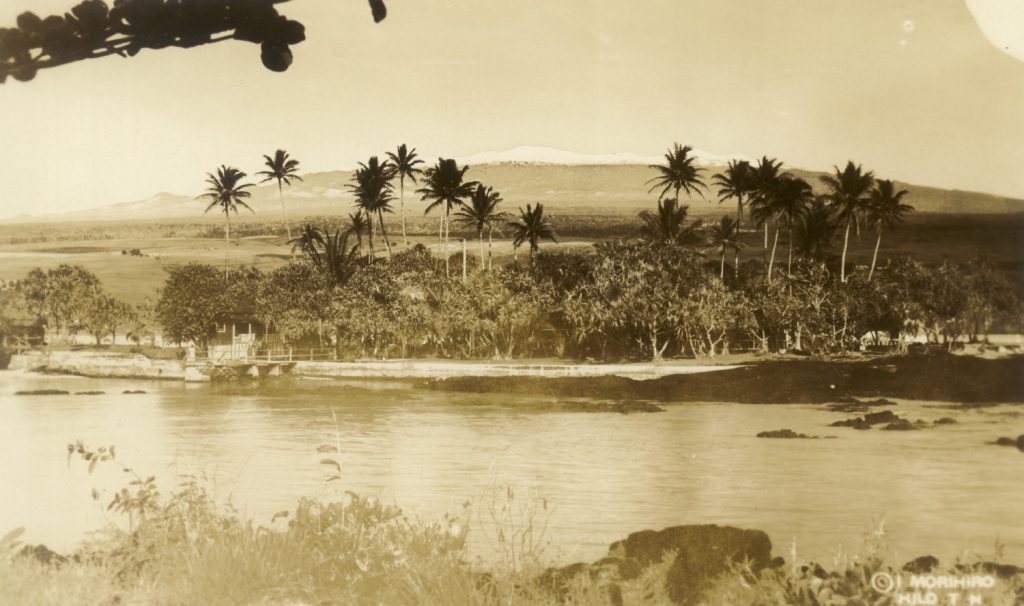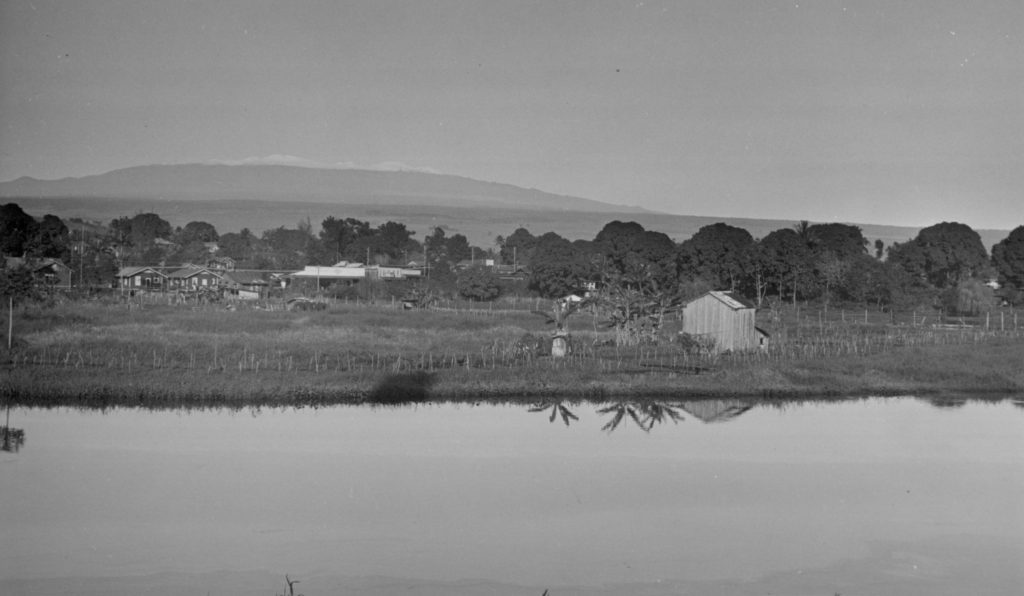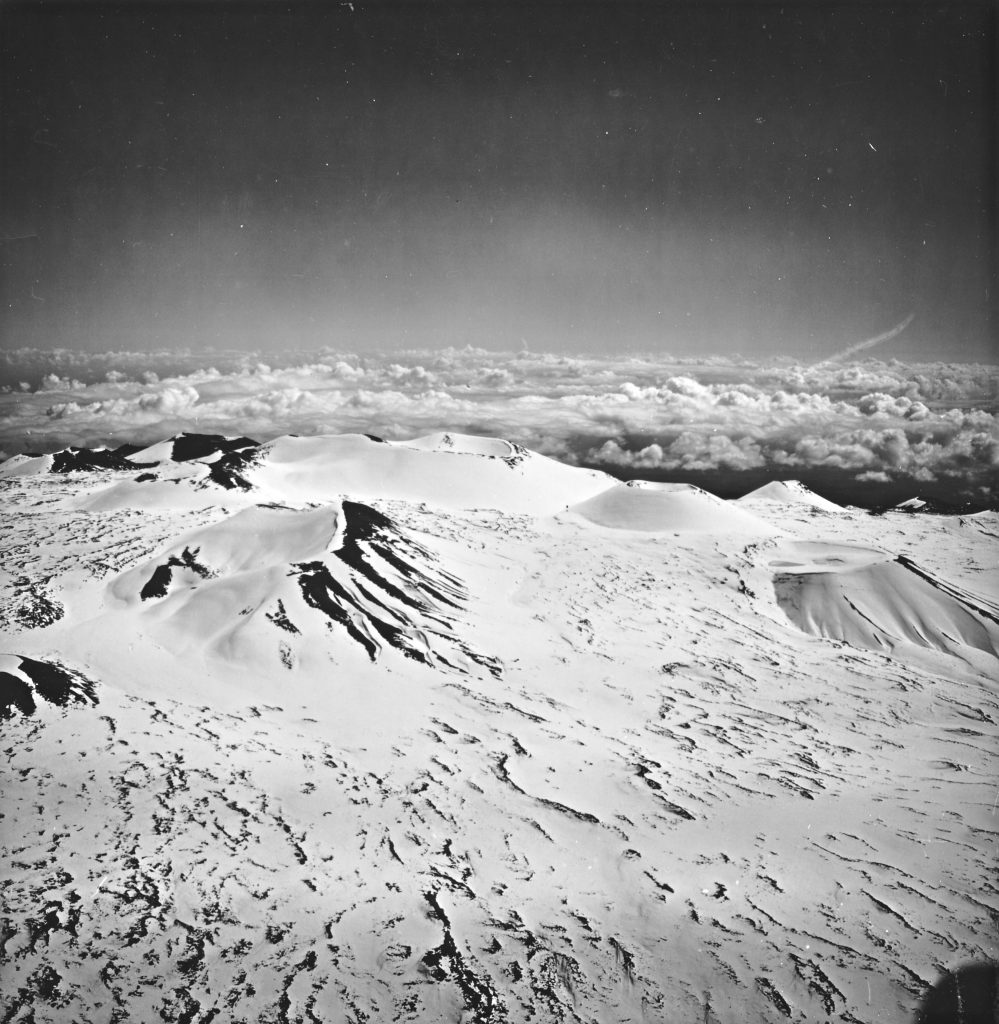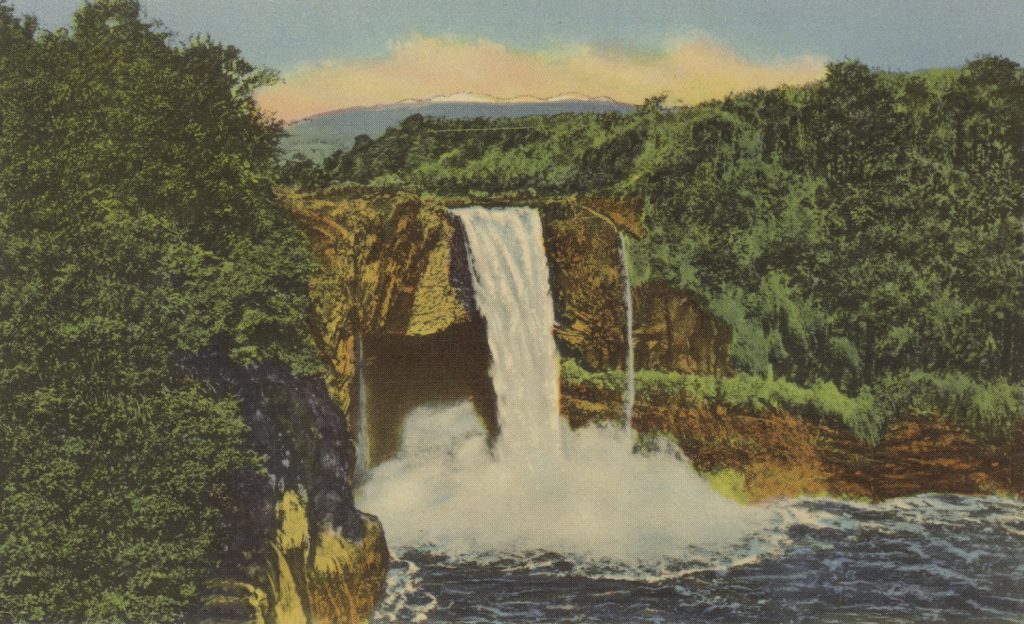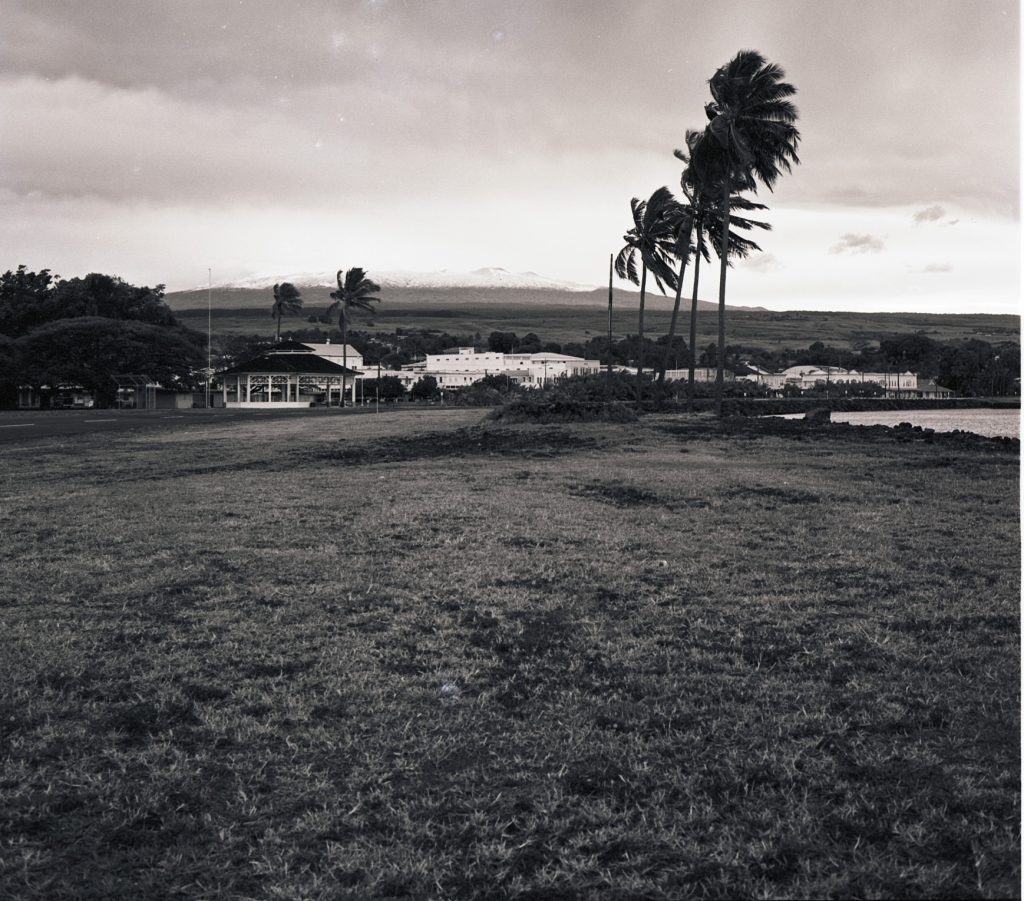Hoʻoilo refers to the rainy season. During the winter months of October to April, snowfall is historically frequent on the highest elevations of Hawaiʻi Island: Maunakea (13,803 feet) and Mauna Loa (13,679 feet). Snow occasionally appears on the mountains of Hualālai (8,271 feet) and Haleakalā on Maui (10,023 feet).
Hawaiians understand snow as one of the sacred elements. Hawaiians call the largest mountain in the islands, Mauna a Wākea (Kea) after Wākea, an ancestor of all Hawaiians. Poli‘ahu is known as goddess of the snow, the daughter of Wākea and Papa, and the sister of Pele, goddess of volcanoes and fire.
The James Cook expedition of 1778 recorded the sight of snow on Maunakea. Later explorers and Christian missionaries noted snow, occasionally throughout the year. Snowfall still varies – rare at times, but abundant on other occasions. The National Weather Service announces severe wind gusts (up to 120 mph) and issues blizzard warnings for the alpine desert heights.
These photographs represent just some of the winter images preserved by the Lyman Museum. To see even more, the Archives is open for research by appointment. Learn more at https://lymanmuseum.org/archives/research-collection/.
